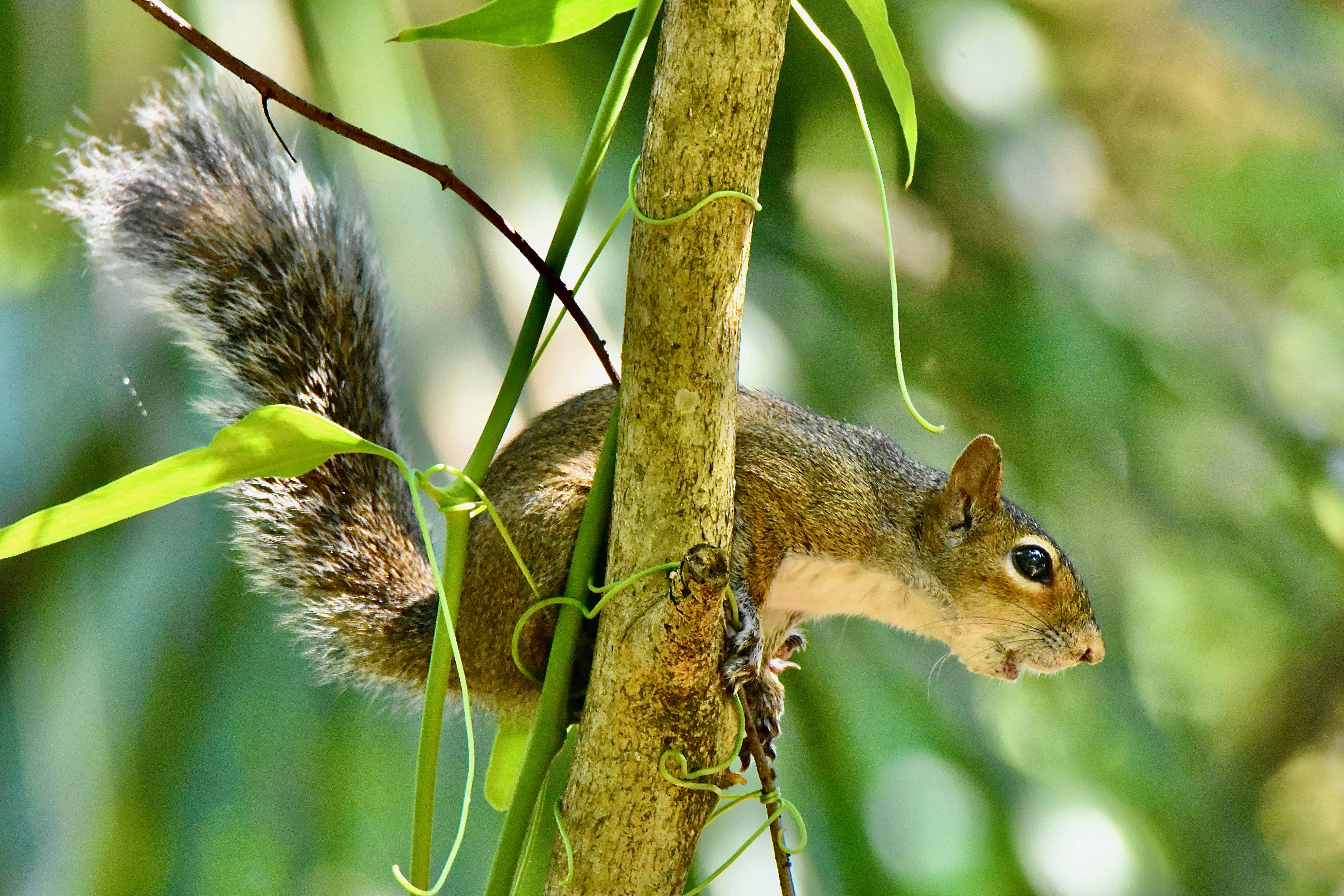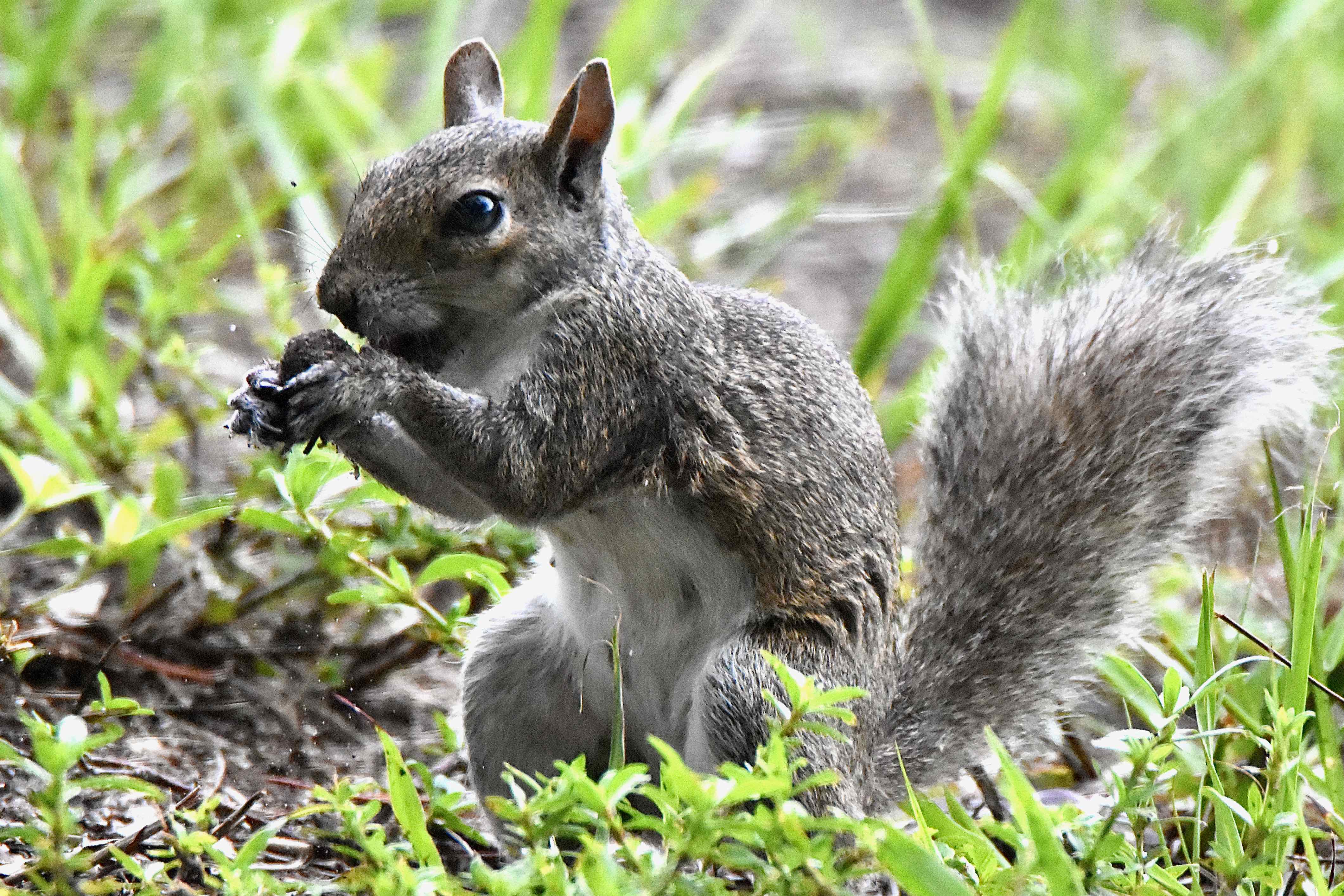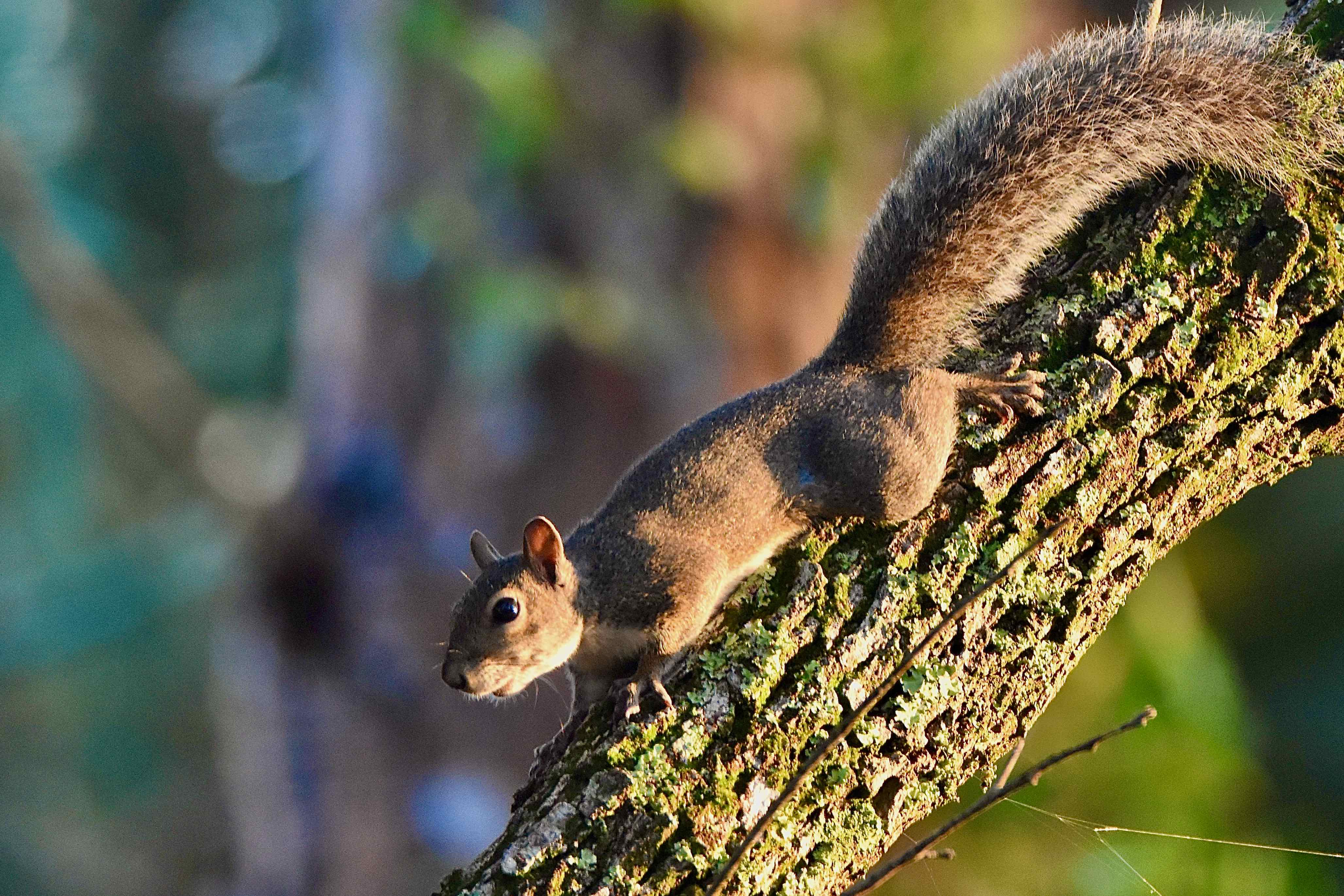
Eastern gray squirrel, photographed at Okeeheelee Regional Park, West Palm Beach, Palm Beach county, in May 2017.
They're everywhere! They're everywhere! Well, just about everywhere. You'll find the eastern gray squirrel, Sciurus carolinensis, in deepest woods; you'll find them in the city. You might even find one nesting in your attic.
They're present throughout Florida, one of three squirrel species statewide. Their native range extends as far north as New Brunswick, Canada, west to Manitoba and south to Texas. Chances are, if you spot a squirrel in the United States east of the Mississippi, it's this guy. Through human intervention, they've invaded Britain and continental Europe, South Africa and Australia. Eastern gray squirrels also have been introduced in places out west, including California, Oregon, Washington, Idaho, Montana and British Columbia. They're a particular problem on Vancouver Island, where they pose a threat to the native squirrel population.
They are average sized as squirrels go, with a body length of 18 inches, give or take, including the tail. They're generally a mix of grays and browns above, light gray to white below. They can have some reds mixed in; there are populations that are black and some that are entirely light colored, though they are rare. Males and females look alike. Unlike many mammals, they are diurnal, creatures of the day, most active in the morning and late afternoon. They eat nuts and seeds, berries and bark, insects, bird eggs and baby birds. But they'll also nibble on wiring insulation and house siding.
Eastern gray squirrels are serious hoarders, hiding away food in hundreds of caches for future snacking. They count on memory to find the general location of their stash and a strong sense of smell to find the particulars. In turn, squirrels are preyed upon by hawks, owls, raccoons, snakes, feral cats and dogs.
Eastern gray squirrels breed twice a year, once in winter, the other in late spring or summer. Their preferred nest site is a tree cavity; if they can't find one, they'll select a suitable fork in the tree and build a nest, called a drey, using leaves.
The gestation period is about 45 days, during which the mom is alone. The young are born hairless and blind; hair will start to show in two weeks, while the eyes will remain closed over the first four or five weeks. Typical litter is one to four. Mom might move her brood from a cavity to a leaf nest. After nine to 10 weeks, the kids are weaned and mom literally leaves them on their own to go start a second family. Eastern gray squirrels reach sexual maturity in 10 to 12 months; they can live to 20 years old, but more typically have a much shorter lifespan, about eight or nine years.
They are incredibly adaptable animals, able to live in a wide range of settings, but typically they're going to be found where either hickory or oak trees are present. They also prefer places with a mature tree canopy, which allows them to move about without having to travel on the ground, where they are more vulnerable to predators. They are not territorial but each has a set range that will overlap with others of their kind.
Their adaptablity has allowed them to prosper in areas well outside their native range. Eastern gray squirrels were first introduced to Britain in 1876 and have become common in many places within the isles. Similar story in Italy.
In places, the gray squirrel's prosperity has come at the expense of native squirrels. In Europe, the gray squirrel is blamed for the local extinction of the red squirrel through competition and as a disease carrier. It's been nominated for inclusion on the list of the world's 100 worst invaders.
But the gray squirrel's success doesn't translate everywhere. The English introduced them to Australia in 1880, but they are now extinct there. There's also a population in South Africa, but the squirrels are not considered invasive there.
As consumers of nuts and seeds, squirrels play a vital role in dispersing trees and other forest plants. However, they can kill young trees, especially oaks, by stripping their bark. They help spread fungus, including that culinary delight, the truffle, by consuming them.
By the way, other two squirrel species found in Florida are the fox squirrel, so called because the face looks something like a fox, and the southern flying squirrel.
Eastern gray squirrels are rodents; they are members of Sciuridae, the squirrel family. Also spelled eastern grey squirrel.



